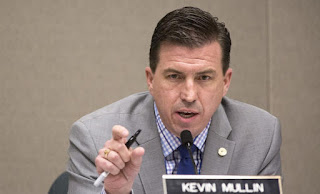More than 100 such clinics are operating in California, the most of any state in the nation. New York state earlier this month took the lead among states in attempting to regulate the clinics, which the chairman of California's $3 billion stem cell agency, Jonathan Thomas, has described as peddling "snake oil."
New York Attorney General Letitia James filed a lawsuit earlier
 |
| Letitia James NY Department of Justice photo |
“Misleading vulnerable consumers who are desperate to find a treatment for serious and painful medical conditions is unacceptable, unlawful, and immoral.
“We will continue to investigate these types of clinics that shamelessly add to the suffering of these consumers by charging them thousands of dollars for treatments that they know are unproven.”
The businesses number more than 700 nationwide and have treated an estimated 20,000 persons. The clinics sell products that they say are stem cells for use as treatments for problems ranging from erectile dysfunction to cancer. The treatments lack rigorous scientific testing and cost thousands of dollars. In some cases in Florida, they have resulted in blindness. Other serious injuries have been reported elsewhere.
In the wake of the New York action, the California Stem Cell Report, on April 5 and again on April 11, queried the California attorney general's office about his position on the dubious clinics. However, Becerra's office has failed to respond.
The web site of the state Department of Justice, which is headed by Becerra, says, however,
"The Department of Justice will put patients first in a more quality health care system. We achieve this by protecting patients from bad actors...."Other California state entities have expressed concern about the unregulated clinics but also offer only a slow schedule for action, if any.
Six months ago, the state Medical Board, which regulates physicians, created a task force to look into problem. Asked recently about the task force's progress since October, Carlos Villatoro, spokesman for the board, responded briefly,
The legislation (AB617) is scheduled to receive its first hearing in the Assembly Health Committee April 23.
The unregulated stem cell clinics have been in business for years. Their dubious treatments and sales pitches have been well documented. UC Davis stem cell scientist Paul Knoepfler has been particularly active. He and Leigh Turner of the University of Minnesota were the first to document the full scope of the clinics in a groundbreaking study in 2016.
In recent years, the Food and Drug Administration (FDA) has become more active. In the case of one California firm, Cell Surgical Network, which has been in business since 2010, the FDA sued the firm last May alleging that it had, among other things, used a smallpox vaccine to create an unapproved stem cell product. The product was injected directly into tumors in persons with potentially compromised immune systems, the FDA said.
"The board is gathering information for the Stem Cell and Regenerative Therapy Task Force and has set a goal to have its first meeting in late May, early June."In the legislature, Assemblyman Kevin Mullin, D-San Mateo, has introduced a measure to deal with the clinics. His bill, if it is passed and signed into law, would not take effect until next January. It would direct the state Department of Public Health to hold hearings sometime next next year in order to craft possible legislation to directly regulate the clinics.
A new regulatory panel called the Stem Cell Clinic Regulation Advisory Group would be created. After members are named and organized, it would have the ability to enact "emergency" regulations on a 90-day notice after it has consulted with "the medical community, bioethicists, legal scholars, and patient advocacy groups."
The legislation (AB617) is scheduled to receive its first hearing in the Assembly Health Committee April 23.
The unregulated stem cell clinics have been in business for years. Their dubious treatments and sales pitches have been well documented. UC Davis stem cell scientist Paul Knoepfler has been particularly active. He and Leigh Turner of the University of Minnesota were the first to document the full scope of the clinics in a groundbreaking study in 2016.
In recent years, the Food and Drug Administration (FDA) has become more active. In the case of one California firm, Cell Surgical Network, which has been in business since 2010, the FDA sued the firm last May alleging that it had, among other things, used a smallpox vaccine to create an unapproved stem cell product. The product was injected directly into tumors in persons with potentially compromised immune systems, the FDA said.





